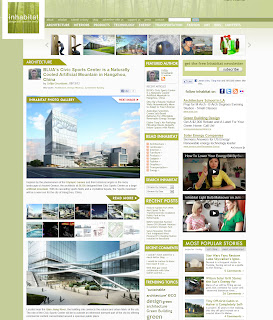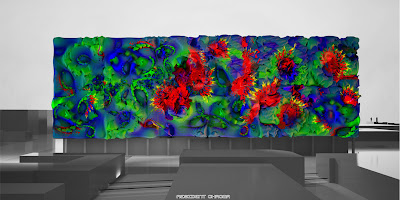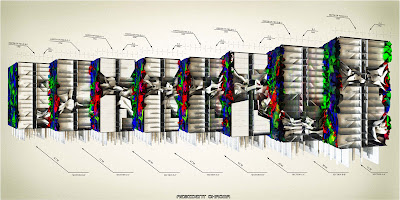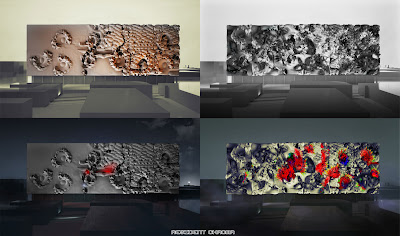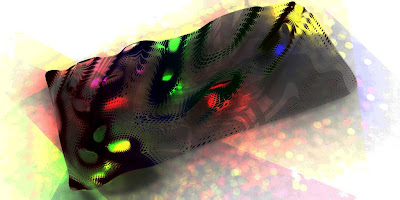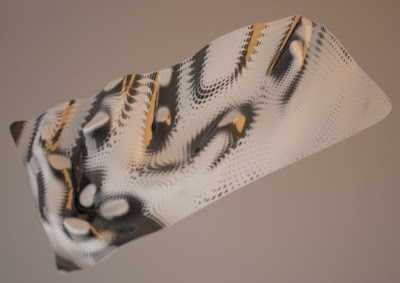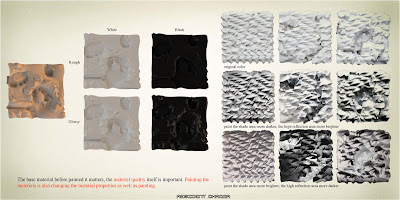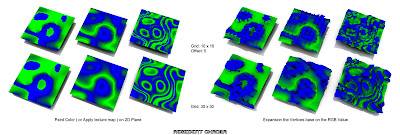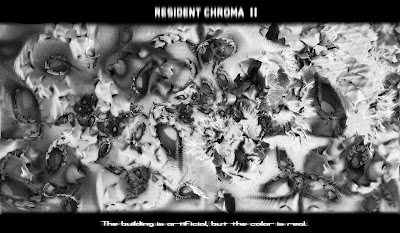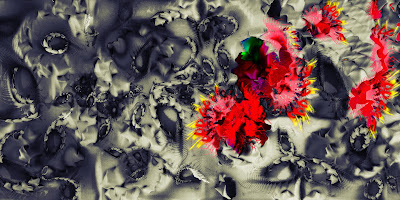工程概况
The site for this project is located at the west side of Hangzhou new city, 2.6km to the CBD center. The facility has a total built area of 15,500 square meters. Above ground floor area is 46,700 square meters. The southwest corner is the entrance for the planned Metro Line and around the site are high-end residential districts. The north side is bounded by a primary school. Adjacent to Qian Jiang River, the site is a connector between the natural and urban life of the city, making it a perfect location for a sports complex. Our project is based on creating an urban plaza while also creating an icon for the lack of large-scale commercial facilities and distribution of leisure spaces. With the convenient transportation, the sports center radiates across the whole city.
该项目地块位于杭州钱江新城西侧, 距钱江新城核心商务区2.6km。项目用地面积1.55公顷,地上建筑面积约为46700M2 ,场地内地势平坦,基地西南角为规划中的地铁四号线出入口。基地具有很高的亲水性,从基地穿过富春路就是新塘河,在基地东南面500m左右就是钱塘江。基地周边多为住宅用地,现已建成多个高档住宅小区。北侧为杭州市胜利小学及娃哈哈学前教育集团。针对地域周边缺乏大型的商业设施及集散休闲广场特点,我们在设计中融入标志性建筑和城市广场的概念。区块交通便捷,本案作为市全民健身中心能辐射城市各个区域。The site for this project is located at the west side of Hangzhou new city, 2.6km to the CBD center. The facility has a total built area of 15,500 square meters. Above ground floor area is 46,700 square meters. The southwest corner is the entrance for the planned Metro Line and around the site are high-end residential districts. The north side is bounded by a primary school. Adjacent to Qian Jiang River, the site is a connector between the natural and urban life of the city, making it a perfect location for a sports complex. Our project is based on creating an urban plaza while also creating an icon for the lack of large-scale commercial facilities and distribution of leisure spaces. With the convenient transportation, the sports center radiates across the whole city.
Design Concept
设计理念
Since the first rays of the Olympic flame lit by the sunshine of Mount Olympus, the mountain is deeply connected with sports. Hangzhou is a hilly city. Mountain climbing always becomes a popular out-door game for people there. The government carries out mass sports activities to promote national fitness program. We gave the concept of "SPORTS HILL" to create a "sports mountain” for the city.
自从第一束奥运圣火由奥林匹斯山上的阳光点燃的那一刻起,山与运动之间就建立起了深刻的联系。杭州市政府也积极倡导全民健身,而杭州多丘陵,游山成了一项热门的休闲健身运动。我们针对“全民健身”的场地需要,提出“SPORTS HILL”的概念,旨在打造一座“运动山”。Since the first rays of the Olympic flame lit by the sunshine of Mount Olympus, the mountain is deeply connected with sports. Hangzhou is a hilly city. Mountain climbing always becomes a popular out-door game for people there. The government carries out mass sports activities to promote national fitness program. We gave the concept of "SPORTS HILL" to create a "sports mountain” for the city.
We create a new synthetic ground for sports activities while also an iconic figure against the relaxed background of the sports landscape. This building is a symbol of the new status of Hangzhou as one of the six ancient capital and international city. From a massing view, we design the podium and 42 meter tower in a stacked way in order to contrast with the complexity of the 70 meter tower. The roof is interconnected to make a continuous, differentiated sports landscape with cascading sports fields and pathways. This landscape features basketball courts, volleyball courts, badminton, and tennis, at various levels. The steel frame of the podium becomes the major structural piece for the curtain wall but also houses the circulation element for the facade. The sunken plaza becomes a big open space which has been designed as a microclimate ecological environment facing the school. It also can be entered from the civic square on the southeast.
设计通过体育活动创造出一个人造景观,同时也为新CBD区创造出一个地标性建筑,我们考虑到要用有限的投资做到最醒目的效果,因此合理分配工程投资成为了我们此次设计的重点之一。我们把裙楼和42米塔楼的体量做的尽量简洁,以体块的堆砌组合来体现建筑的纯粹之美。相对的,我们用较大的投资重点打造70米塔楼的外立面。所有建筑通过屋顶相连接使这个有连续性的,有功能分区的体育建筑通过不同的链接让人一目了然。屋顶设有许多室外球场包括有篮球,排球,羽毛球和网球场。部分全民健身中心建筑形成一个坡道式体块。此外,裙楼表面的钢架造型、下沉广场的生态水景也是我们重点打造的部分。整个设计中有开敞式下沉广场面向学校,有很多开放空间。室内和室外皆有体育空间,地块的南侧为大广场,在广场里有多变的花园和景观,提供给市民一个休闲,文化,活动,娱乐的城市客厅。
基地为朝向南偏东46度的长方形地块,长边长约210米左右,短边长约76米左右。建筑主体由两栋塔楼与连接两者的裙房组成,西侧塔楼高70米,东侧塔楼高42米。裙房呈阶梯状,最高处为30米。裙房与70米塔楼的连接处挑空一层,形成一个穿越式下沉广场。
两栋主楼分别设置在地块的东、西两侧,具体位置遵照任务书与规划条件的要求执行。裙房部分退南侧用地红线32米,北侧退红线8米。与东北侧住宅楼距离51米,间距满足规范要求。日照方面根据规范要求,经计算满足北侧地块的小学和幼儿园的日照要求。The set back of the south side create a rectangular civic square. The civic square and the green belt integrate into a 6000 square meters long main entrance space. The civic square distributes the flow of people pressure from the major and the Metro Line and is covered with landscaping. The entrances that lead into the office building and the east recreation center are located on the west and east side of the squares respectively. The sunken plaza connects with the civic square to increase the depth of field effect. Three ground plazas, one sunken plaza plus a wealth of roof terrace plaza space create a rich and varied public area in order to attract more people to experience and stay longer within the design reflecting the lively atmosphere of a strong national fitness.
裙房往北侧的退让在基地南侧生成了一个长方形的主广场。主广场与城市绿化带融合成为一体,形成沿主干道的一个6000平方米的开阔入口空间。主广场既是基地内的集中绿化景观,又是一个人流集散广场,最大限度的为城市道路及未来的地铁四号线出入口分担了人流压力。此外在基地东侧及西侧也设置了两块次入口广场,西北侧广场作为办公入口广场,通过一个下沉广场与主广场连成一片,增加了主广场的景深。东南侧广场连接建筑东侧运动场地次入口。三个地面广场,一个下沉广场再加上丰富的屋顶平台广场空间,在临近城市干道的位置创造出丰富多变的公共空间以吸引更多的人进入体验并在地块内停留更长的时间,体现更加浓厚的全民健身的生动氛围。
The sunken plaza is 1.2 meters underground, which connects with the entry square by folding shaped steps. The garden plaza is shaded via a cantilevering roof, and a series of pools underneath allow for evaporative cooling to occur, while also interacting with the swimming pool behind the curtain wall, creating a lively water environment. It is spatially defined on all sides by topography, plantings, shelters and the plaza roof, creating a highly specific and integrated environment and small microclimate. The plaza roof and canopies offer shade, while plant-life and water features cool the air underneath based on principals of natural convection and evaporative cooling, creating a thermally regulated environment. This space is a lush and tropical atmosphere including public amenities such as gift shops, bookstores, and cafes, allowing people sanctuary from the stresses of city life.
下沉广场下沉1.2米,通过大片的折线形台阶与入口广场连接。下沉广场本身是一个挑高的灰空间,设置有形态活泼的水池,透过游泳馆的幕墙与馆内游泳池互动,渲染出一个活泼的水环境。我们通过对挑空部分建筑形态和檐口挡板的精心设置,加上生态植物的运用,在下沉广场形成一个小型生态微气候场。在空间上它各边由地貌、植被、檐口挡片以及广场屋顶所限定,创造了一个特别和集中的环境。广场屋顶和檐口挡片提供遮荫,而根据自然对流和蒸发降温的原理,植被和水景对下面空气的冷却创造了一个热功能得到控制的环境。这个空间洋溢着豪华的热带气氛,包括了各种娱乐休闲,比如礼品店,书店和咖啡厅,让市民远离城市生活的压力。
Organizational Concept
功能布局
According to the different type of space, we divided into two parts: “active” and “inactive”. Sports activities are located on the lower part of the tower and the podium, in clear groups for ease of orientation piled into a single piece of “active " area. The top of the tower is planned as a relatively “inactive” area with office, accessories and the VIP Club.
我们根据空间类型的不同在功能布局上面划分为动、静2个区域,塔楼的下部和裙楼由各种运动场馆有机堆砌组合成一整块“动”的区域。塔楼的上部都规划为相对较“静”的办公,管理用房以及VIP会所。
These two towers and podium are combined into a lively multi-stores complex where people can engage in sports indoors at all times of the year. The Swimming center is located at the first floor of the complex, nestled underneath the cascading sports landscape. All pools are contained within a grand open space making it a memorable and urban swimming experience. It can be entered from the south facade or from the civic square.
两个塔楼和裙楼组成了一个充满活力的多层建筑,人们随时都可以进入室内活动。游泳池位于坡道运动景观之下,综合体地面一层。所有泳池在一个大的开放空间内,在此人们可以享受到令人难忘的城市游泳体验。人们可以从南侧和市政广场方向进入游泳区域。
The recreation center is connected by the two towers on the southwest and northeast. It is organized by passageways which connect the sides of the site together into a network. Skylights provide daylight the interior spaces and offer views of people playing sports outside. Ground level functions such as galleries and restaurants cater to the general public, making the space a community center as much as a sports center.
娱乐中心与西南面和东北面的两个塔楼相连接,位于场地的交通节点上。建筑内部有天窗采光,可以观看外面的体育比赛。底层的画廊,餐厅等常见公共设施使这里更像一个社区活动中心而不是体育馆。
Structure and Materials
结构与材料
The main tower and podium is wrapped with three folding pieces, which covered with cellular aluminum. The twisted-folding shape has a dynamic trend of an upward spiral, which makes the tower an increasingly upright illusion. The trend of folding shape determines the density of the skin texture.
主塔楼表皮分三段式包裹,蜂窝金属铝板以折线的形态分层包裹住裙楼和塔楼。总体盘旋上升的外观形成一种向上的动态趋势,使限高70米的塔楼错觉上变得愈加挺拔。表皮展开加覆肌理,肌理疏密度根据包裹走势形态。
The design features faceted crystalline geometry embedded with crystal patterns in 3D cold lamination film, ETFE membrane, and local-shaped glass structure. They were wrapped into a tower on four facades hybridizing the graphic and the 3-D dimensional, hybridizing the depth of space, to create the illusion of volume in space, which achieves new complexities between flatness to depth and depth to flatness. They are used to heighten the sense of irresolution between flatness and depth as well as correlate graphic/pattern effects with mass inflections. The design features massive membrane bubble ‘windows’ oriented to allow views out to all angles of the city. The perforated stainless steel panel on the wall strengthened the crystal shape, as an attraction landmark for the city.
塔楼外表皮与钢架后面的幕墙通过大体块的平面的3D贴膜与凸起的ETFE膜结构的材质变化以及局部异形玻璃结构的设计包裹,在塔楼归整的四个立面上,混合平面图案和三维空间,混合空间景深,在空间中创造体量的幻觉,完成新的复杂性介于平面到景深与景深到平面之间,加深了景深和平面的不确定性并且和绘画般的图案效果整体形变紧密相连。透过膜结构和玻璃可眺望城市里精彩的每一个角落,除此之外,墙体的穿孔不锈钢铝板更加强了整个结晶体的形态,犹如城市里的一颗水晶,强烈的吸引人们的目光,成为区块的地标性建筑。使整个全民健身中心与周边商业充满无限商机。
The recreation center and swimming center
will be constructed out of reinforced concrete frame and slab construction for
economy. Certain areas such as the pools and large gaming courts will feature
column-less spaces and increased beam depth. Other spaces will relax back into
a 9M x 9M economical grid spacing. This column grid will be carried all the way
down through the parking garage in the basement. The long span facade will be
made from deep sculptured beams which will be stabilized by interior armatures.
These beams will also contain the mechanical systems of the space. 文娱中心和游泳中心将采用钢筋混凝土结构配以板材,经济合理。泳池,大型竞技场等区域将不使用支柱,增加了横梁的深度,其它的功能场所都采用了9米x 9米的间距,非常经济,这种圆柱网格将覆盖整个地下室。大跨度的立面上的横梁由内部楼板加固,这些横梁还包含空间的机械系统。
The south side facade connects the Podium and 42 meter tower through the transportation space. Five canopies are not only the supporting connections for the steel frame, but also offer shade. The external steel frame highlights the idea of a ladder and merges with the outer shape of the aerial layer, which makes an elegant liquid motion of a fluidity and dynamic transition.
裙楼和42米塔楼通过南侧的一整片立体交通空间来统一外立面,五片檐口挡片既是钢结构折角处的衔接构架,又为架空层起到避雨遮荫的功能,外部钢架顺着梯段的走势延伸,结合架空层的外观,形成疏密变化收放自如的肌理,使建筑的正立面充满动势。
Project name: Civic Sports Center, Hangzhou, China
Sketch Design: 02.2012 to 03.2012
Client: Hangzhou Sports Development Group
Program: Civic Sports Service Center and Public Sports Activity Center
Size: 72,700 m2 (above ground 46,700 m2, underground 26,000 m2)
Design: BLUA
LDI: Hangzhou Jiangnan Architectural Design Co., Ltd
Design team: Shou Zheren, Ge Liangjun, Chen Jian, Qian Haiping, Ma Li, Jiang Tianjiao, Zhang Hong, Zheng Jue, Xia Tingting, Tao Jiangjie, Shen Qing.
Structure: Hangzhou Jiangnan Architectural Design Co., Ltd
项目概况
项目名称:杭州市全民健身中心
建设地点:中国杭州
业 主:杭州市体育发展集团
设计时间:2012年2月~3月
项目用途:杭州市全民健身服务中心及城市体育公共活动中心
建筑面积:7.27万m2(地上建筑面积4.67万m2, 地下建筑面积2.6万m2)
设计单位:BLUA
当地设计院:杭州江南建筑设计院有限公司建筑一所
设计团队:寿哲人,葛良军,陈戬,钱海平,马立,蒋天骄,张弘,郑珏,夏婷婷,陶江杰,沈卿
结构顾问:杭州江南建筑设计院有限公司结构所


















